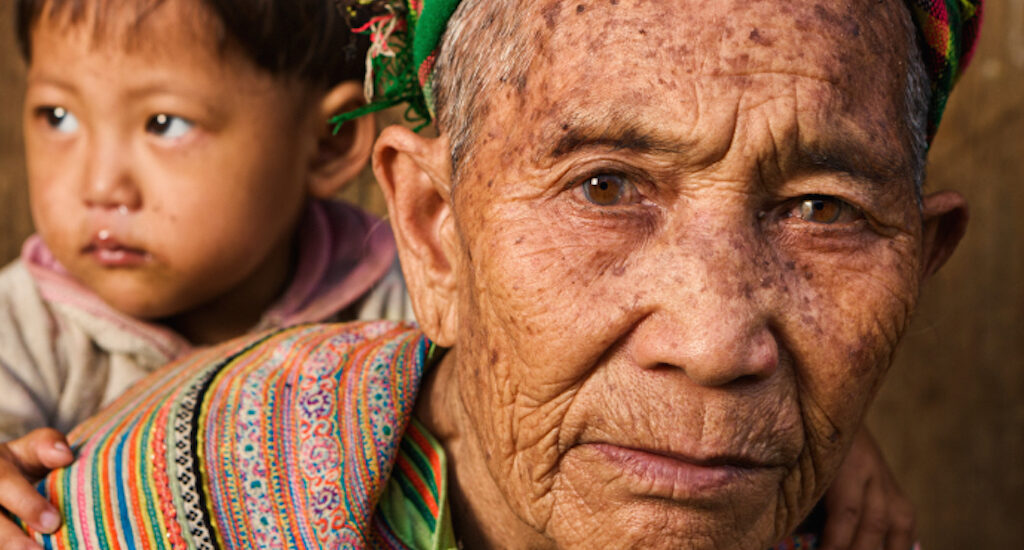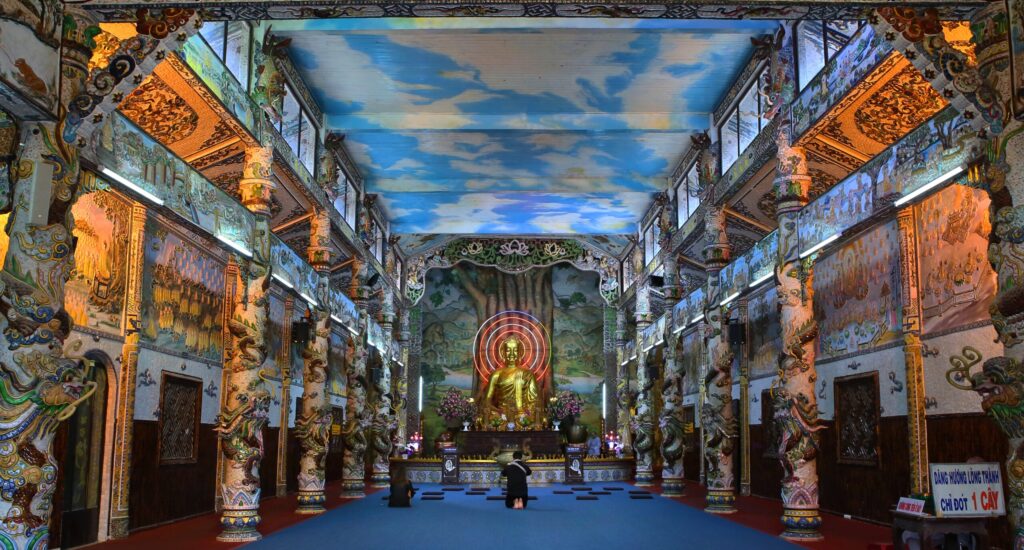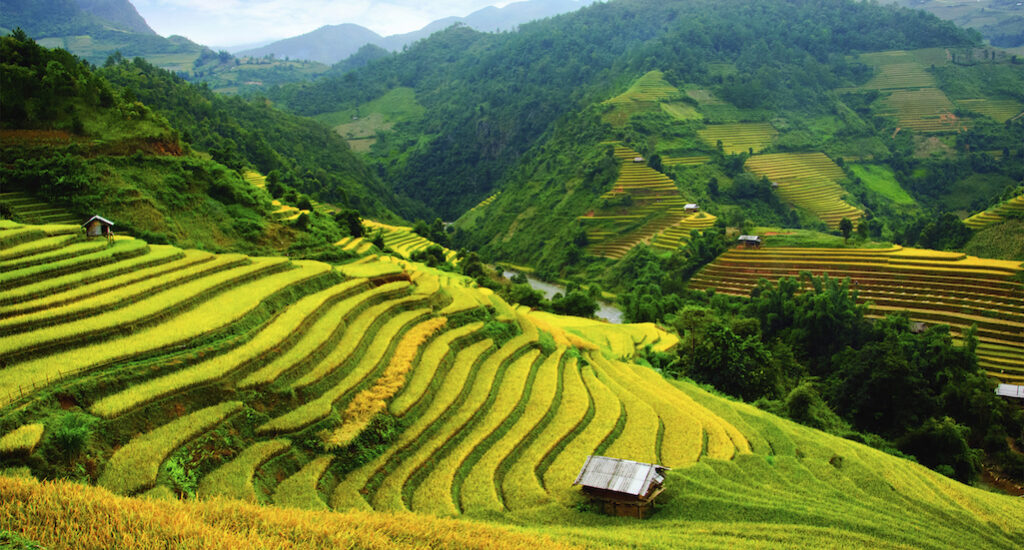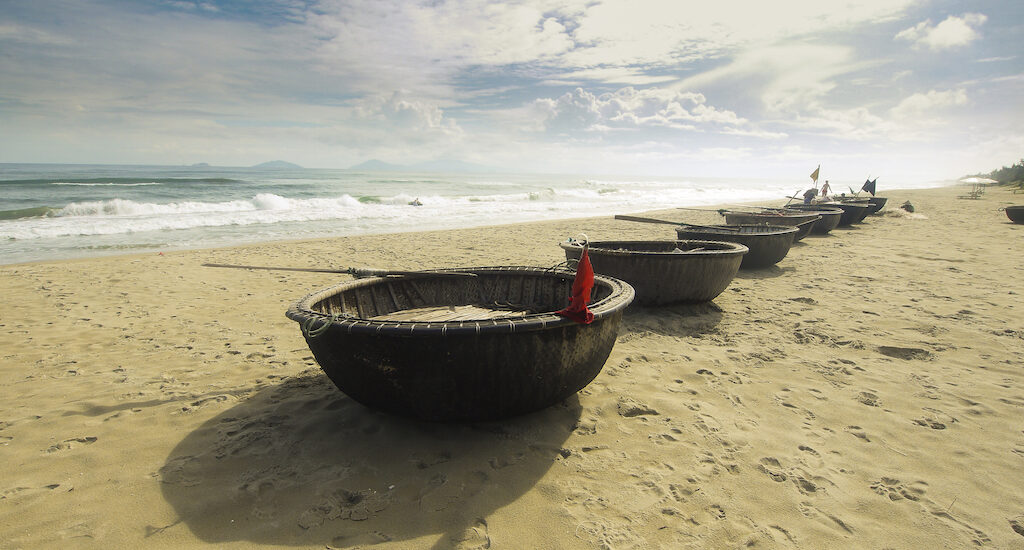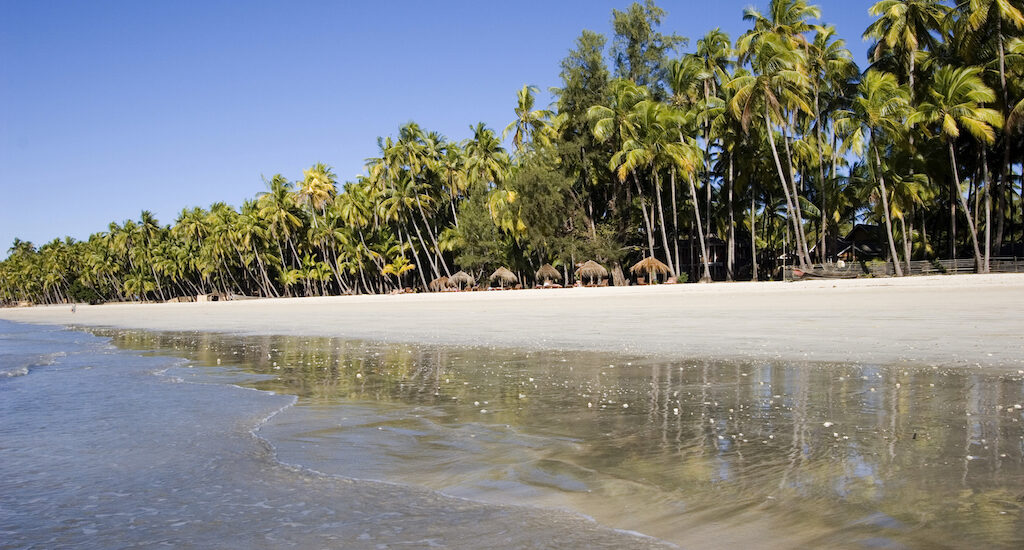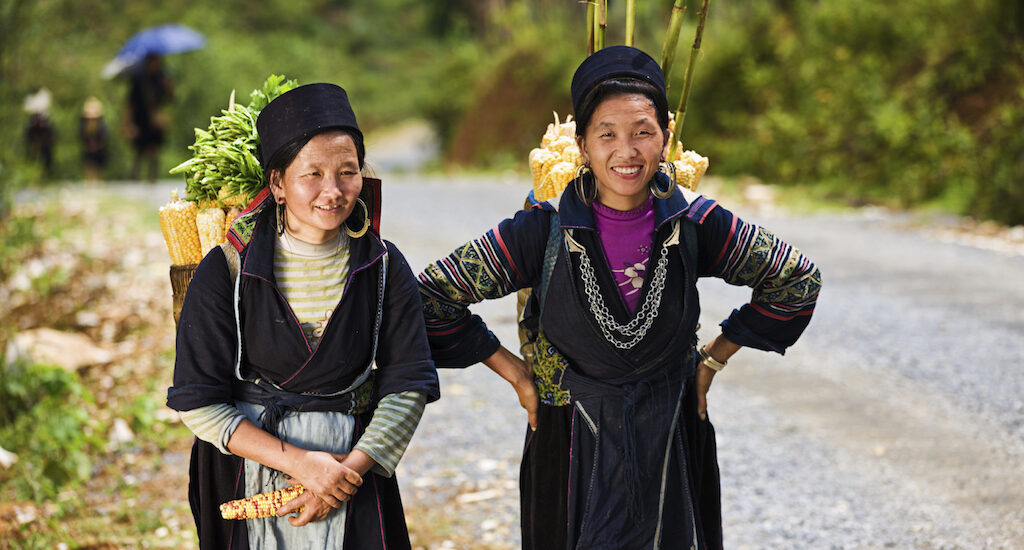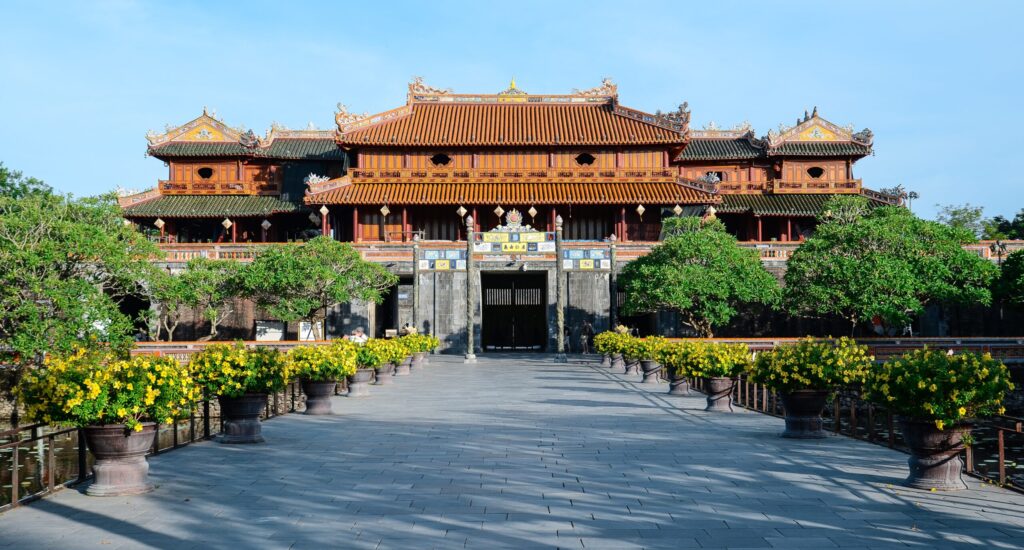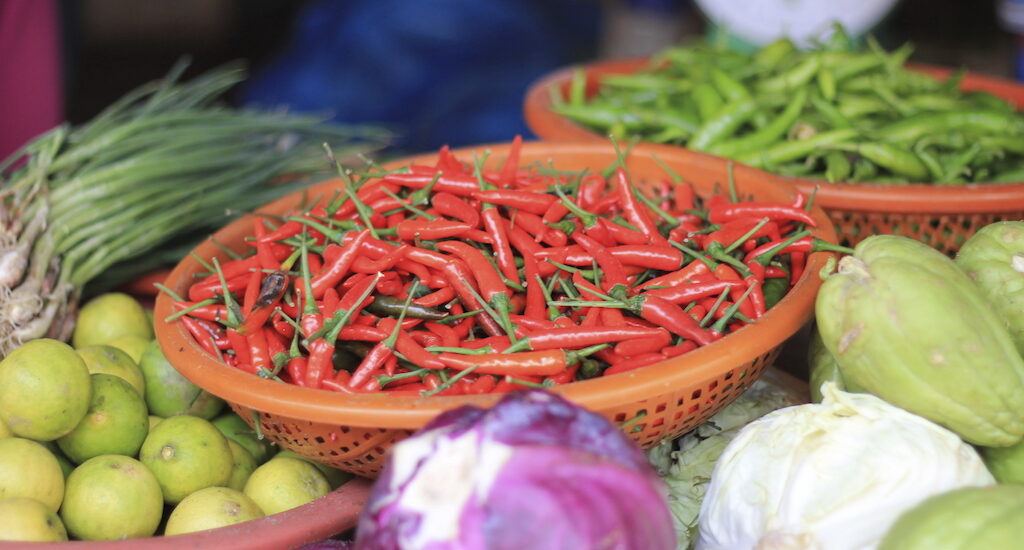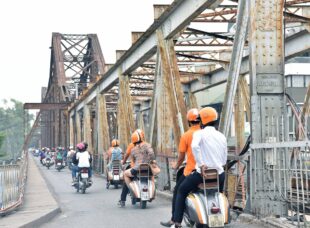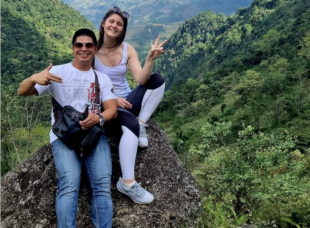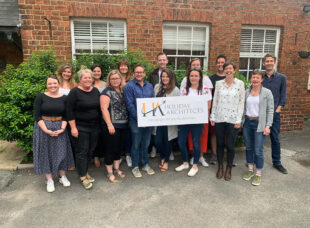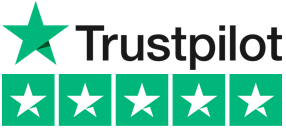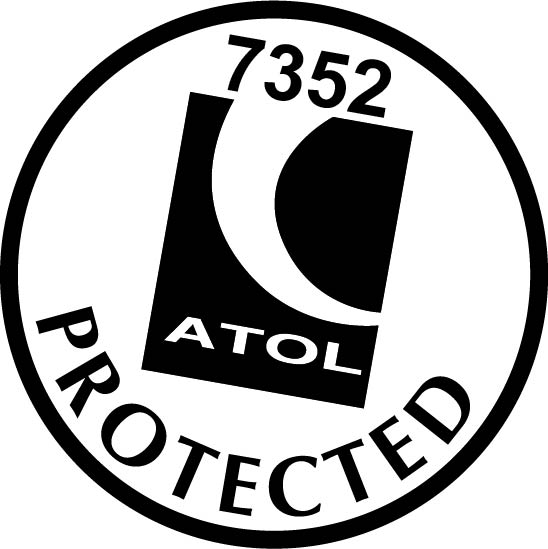Overview
Vietnam is amazingly diverse. It is a country with a remarkable history, a rich culture, wonderful cuisine (the best in South-East Asia?), montagnard tribes and striking landscapes. It is made up of dramatic limestone karsts, terraced paddy fields, lush rain-forests, stunning beaches, high mountains and flat river deltas. It was the backpackers’ best-kept secret in the 1990’s and has now risen to become a travellers’ nirvana in the 21st Century. Vietnam has effortlessly embraced ‘luxury’, without losing any of its authenticity – a holiday in Indochina is as stress-free as it is rewarding, the proficient infrastructure and an inherent Indochinese ‘style’ ensuring happy travels.
When to travel
Welcome to a country with over 2,000 miles of coastline, with several distinct weather systems. Consequently, there really is no right or wrong time to visit Vietnam, as its likely you will experience clear blue skies, sunshine and some rain during your travels. Consider the climate, taking in to consideration where the balance of time on your particular itinerary is, but do not allow yourself to get hung-up on notions of ‘low’ and ‘high’ season. As one guidebook or travel company advises you not to travel during any given month, some regions in Vietnam are enjoying simply wonderful weather. Conversely, ‘high season’ leaves locals in that same locale bewildered as they are enduring their most un-settled months! The variation of climate throughout this long, thin country is huge – at times there is snow in the mountainous north, whilst the beaches enjoy tropical 32 °C sunshine.
The best months are considered to be November through April. This is certainly when Vietnam is at its busiest and you have the best chance of clear blue skies. The months book-ending of this pronounced high season are when many savvy travellers head to Vietnam – October (possibly still a bit stormy in places) & May (getting hotter and wetter).
Many like Vietnam best in the hot wet months of June, July, August & September. The rice paddies glisten, beaches beckon and the afternoon storms can be a great spectacle. The occasional day might be lost to rain but some enforced down time can be a nice thing. There are fewer travellers on the ground as well, though that’s starting to change as the domestic summer holidays start to take off for locals.
Practicalities
Flights: You can fly direct to Vietnam with Vietnam Airlines to Hanoi or Saigon, however these direct flights don’t run daily so you do need to be flexible on dates to get the best deals. For other flights, the best options to Vietnam take you through Bangkok (Thai Airways, EVA Air or BA), Kuala Lumpur (Malaysian Airways), Singapore (Singapore Airlines) or Hong Kong (Cathay Pacific). It is possible to break the journey in these places, perhaps adding on a city or beach break in Thailand or Malaysia, or a city break in Singapore or Hong Kong.
A host of other airlines, European & Middle Eastern, fly to South-East Asia via their respective hubs, but rarely are these cheaper or more convenient. However, some do offer more options for those travelling from regional UK airports. We price up our flights on a case-by-case basis, making sure we use the best available deals for your trip. If you have any particular preferences for airlines or routes, or are considering upgrading your flights, please let us know so we can include this in your proposal.
Language: Vietnamese
Currency: The ‘dong’, abbreviated on price labels and menus to VND or just ‘d’. However, although not offical, the US dollar is the de facto currency and by far and away the most useful for the traveller – most hotels and restaurants, shops, taxis, buses and airlines actually set their prices in US dollars. Note that worn or ripped banknotes will not be accepted – bring clean, unmarked bills only and the newer the series the better.
Electricity: 220 volts. 110 volts is also used. Most wall sockets accommodate French-style rounded pins, as well as Americans style flat pins. It is recommended to bring a universal plug.
Clothing: Comfortable lightweight clothing in natural fabrics such as cotton is most suitable for travelling in Vietnam. The dress code is fairly casual as in most parts of the tropics but it is advisable to cover arms and legs in the evenings against biting insects. A lightweight raincoat and umbrella are a good idea in the rainy season and an umbrella can also offer useful shade from the sun. Evenings in the north and the centre can be quite chilly so bring a sweater and a good jacket especially from November to February. Visitors should not wear shorts, short skirts or other revealing clothing when visiting pagodas and monasteries. Shoes must be removed before entering some religious building or a private home. It is therefore useful to wear shoes without too many laces and which can easily be taken off.
Etiquette: Vietnamese etiquette is easy to fall in line with. Smile a lot. Don’t point. Don’t ever raise your voice – getting visibly angry with people will prove to be totally counter-productive. If you have a problem, remain calm and become increasingly polite – and you will be helped.
Health
As we’re not medical experts we feel it is essential you contact your G.P. regarding vaccinations and the like for travel to Vietnam. In addition to such vaccinations as you’d routinely have for living in the UK, further boosters are recommended for Hepatitis A, Typhoid, Polio and Tetanus. If you have visited a country where Yellow Fever is endemic, you will need a certificate of vaccination.
You must talk to your GP first, but it is worth also drawing your attention to this useful website: www.traveldoctor.co.uk/ – an interactive website providing specialist health information for travellers plus customised lists of travel medicines, vaccines for holidaymakers, global adventure travellers and expeditions.
Malaria is present in some rural areas at certain times of the year.
Visas
British Passport holders can enter Vietnam for a single entry of up to 45 days with a visa exemption. A minimum of 6 months validity is required on your passport from the date of departure from Vietnam.
For stays over 45 days, or multiple entries, a visa will be required to enter Vietnam on a British Passport. For other types of passport, please check with the local Vietnamese embassy. There are three options available to obtain your visa, if required:
1) Electronic Visa – British passport holders can now enter Vietnam using an e-visa for single or multiple entry, of up to 90 days. The application can be made online at https://evisa.xuatnhapcanh.gov.vn/.
2) Apply for a visa in advance of travel from a Vietnamese Embassy/Consulate in your home country – this is the option required where visa-on-arrival is not available.
3) Holiday Architects can arrange a “Visa-on-Arrival” authorisation for you – A good option for those who are unable to send their passports or visit the consulate in advance of travel, or who have made last minute arrangements. No charge is made by Holiday Architects to arrange the visa on arrival but the visa fee will be required locally on arrival at the airport.
Food & Drink
Thai food may be the most famous of all the South-East Asian cuisines, but true ‘foodies’ would rather go for Vietnamese every time. Quite rightly so. Vietnamese food is light, subtler in flavour and dishes are often boiled or steamed rather than stir-fried. An importance is placed on herbs and seasoning – no surprise in this land of diverse climates.
In the south, curries and spices often feature, while other regions have evolved their own array of specialities. Outside influences abound, as Buddhism introduced a vegetarian tradition to Vietnam, while much later the French brought with them bread, dairy products, pastries and the whole café culture.
Though it originated in Hanoi, a dish you’ll find throughout Vietnam is pho (pronounced as “fur”), a noodle soup eaten primarily at breakfast. A basic bowl of pho consists of a light beef broth, flavoured with ginger, coriander and sometimes cinnamon, to which broad, flat rice-noodles, spring onions and slivers of chicken, pork or beef are added. At the table you add a squeeze of lime and a sprinkling of chilli flakes or a spoonful of chilli sauce.
With its diverse climate, Vietnam is blessed with both tropical and temperate fruits, including dozens of types of banana. The most prolific orchards are in the south, where pineapple, coconut, papaya, mango, longan and mangosteen flourish. Dalat is justly famous for its strawberries, while the region around Nha Trang produces delicious dragon fruit – the size and shape of a small pineapple, the dragon fruit has a pink skin, studded with small protuberances, and smooth, white flesh speckled with tiny black seeds. The slightly sweet, watery flesh is thirst quenching and, indeed, often served as a drink, crushed with ice.
A fruit that is definitely an acquired taste is the durian – a spiky, yellow-green football-sized fruit with an unmistakably pungent odour reminiscent of mature cheese. It does not taste as it smells, once described by a friend as ‘onion-laced custard’. Jackfruit looks worryingly similar to durian but is larger and has smaller spikes…and tastes a lot better.
A relative newcomer on the culinary scene is French bread, which the Vietnamese truly understand. It is made with wheat flour in the north and rice flour in the south. Baguettes – sometimes sold warm from street side stoves – are sliced open and stuffed with whatever you fancy.
Vietnam’s premium drink is green tea, which is the accompaniment to every social gathering or business meeting and frequently drunk after meals. For those who prefer their drinks with significantly more kick, there’s also rice wine. Some of the local beers are excellent, and an increasingly wide range of imported wines and spirits are available.
The Vietnamese eat early: outside the major cities food stalls and street kitchens rarely stay open beyond 8pm and may close even earlier. In Hanoi & Saigon you can eat at most times of day and night. Markets are often good snacking grounds, with stalls churning out soups and spring rolls or selling intriguing banana-leaf parcels of pate, pickled pork sausage or perhaps a cake of sticky rice. The quality and variety of food is generally better in the main towns and cities then in the countryside, where restaurants can sometimes be hard to find. But you’ll never go hungry; there’s always some stall selling a noodle soup or rice platter and plenty of fruit to fill up on.
Travellers Code of Conduct
– We provide all of our clients with a “Travel Facts” document upon confirmation of your booking. This details useful facts and travel advice for your chosen destination, including restaurant recommendations, reading tips, basic language, cultural traditions, climate information and brief historical overviews. We feel that this offers a useful insight into the country you are visiting, and can help you interact with local residents in a more sensitive, well informed manner. Please try to take the time to read this information before your visit, if at all possible.
– A number of the countries in which we operate holidays are religious societies with a widely observed set of customs. Always respect these norms, particularly when visiting religious buildings.
– To the best of our knowledge, all of the hotels, lodges and camps within our portfolio operate stringent measures to minimise water usage. All of our destinations have issues with water supplies to a certain extent so feel free to raise any possible wastage should you encounter it during your stays, either with the accommodation or with us upon your return.
– Please ask before taking photographs of people, and respect their wishes should an individual not be happy to be photographed. We find that friendly requests and a smile are usually met with assent.
– Strive where possible to make your own contribution to environmental practices within the destination you are travelling. This might include minimising your electricity usage, avoiding smoking in protected areas, sticking to marked roads at all times while self-driving, avoiding coral while snorkelling and safely disposing of all litter (recycling where possible).
– Where possible, try to purchase from local suppliers. This includes shopping for souvenirs, eating out in restaurants and booking further excursions during your free time. In areas where haggling is an accepted part of daily life, don’t become angry or offended if you are unable to obtain what you perceive as a fair price for an item. We emphasise to local suppliers that our clients should never be taken on unsolicited shopping trips, but if this does happen, try to retain your sense of humour, provide a firm refusal to participate and tell us about this on your return. We pass on all feedback from every trip undertaken with Holiday Architects to the relevant local suppliers, who share our commitment to travelling with sensitivity.
– Please don’t remove any indigenous items from their natural habitat and attempt to bring them back as a souvenir. This particularly applies to coral, shells, plants and food in the natural world, and to cultural artefacts and antiques.
– If you are unsure about anything relating to the above, please feel free to ask our local suppliers or your Holiday Architects specialist. All of these people either live or have travelled extensively in the country you are visiting and will be more than happy to offer their considered advice.


